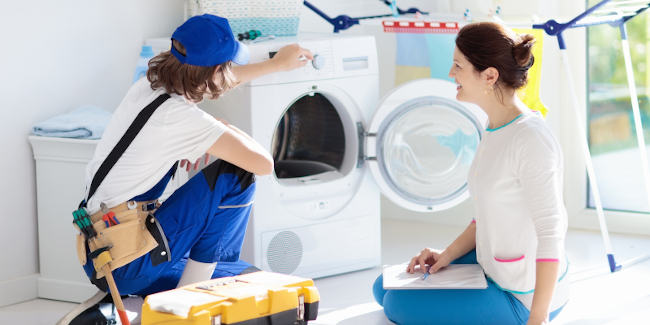- Smart Watch Payments and Digital Wallets in the Philippines - June 8, 2023
- Front-Load vs. Top-Load Washing Machines - May 25, 2023
- Pros And Cons Of Wireless Charging Power Banks - May 10, 2023
Last Updated on
Washing Machine Maintenance Tips
Are you looking for ways to extend the life of your washing machine? Do you want to make sure it’s running smoothly and efficiently? If so, regular maintenance is essential. This blog will provide a comprehensive guide to washing machine maintenance that will help you prevent costly breakdowns while maximizing its lifespan.
From what to check for when giving it a quick inspection to standard procedures that are needed occasionally, we have everything covered in this helpful guide. Read on and keep your washing machine healthy!
Reasons for Washing Machine Maintenance
Proper washing machine maintenance and making sure your machine is regularly clean is essential to maximize its lifespan.
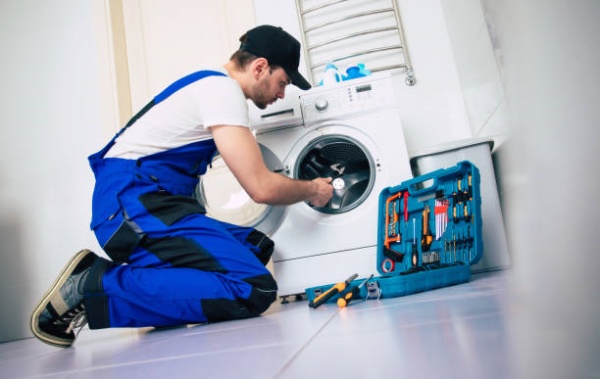
Maximizing Lifespan
Maintaining your washing machine is essential for improving its lifespan and ensuring it lasts as long as possible. Regular maintenance can help to reduce wear and tear on washing machines’ components so that they won’t break down prematurely.
Proper care should include the following:
- Checking the hose/s for leaks.
- Cleaning any lint from around the filter.
- Checking if the appliance is level on all sides.
- Running self-cleaning cycles regularly.
Additionally, ensuring that worn-out parts are replaced promptly will prevent more expensive repairs further down the line. These steps will ensure that your washing machine continues working in excellent condition well into its later years.
Prevent Broken Parts
Regular maintenance on your washing machine is essential to prevent broken parts and prevent leaks. Broken components can cause wear and tear throughout the appliance, leading to further issues such as leaks or mechanical breakdowns. Regular cleaning should be done of the filter and drum before any laundry load so you make sure there are no blockages that could eventually break apart or lead to water damage.
Avoid Expensive Repairs
One of the critical reasons why the maintenance of washing machines is important is to avoid expensive repairs and save money. Regular maintenance helps prevent costly parts from needing to be replaced and keeps them running smoothly. To avoid expensive repairs, check hoses for leaks, level the machine, clean the filter regularly, descale the drum when needed and change worn-out parts as they become an issue.
What to Look for When Checking Your Washing Machine
It is essential to frequently check washing machines for any wear and tear. Basically to look for warning signs even early on.
Clean the Filter
One of the essential steps in washing machine maintenance is to clean the dirt and lint filter. The filter helps trap dirt and lint particles, which would otherwise accumulate inside your washer over time. Build up of lint can become a breeding ground for bacteria and mildew growth. To clean the filter:
- Locate it at the bottom or side of your machine.
- Please remove it from its housing, and rinse any debris accumulated with warm water and a soft cloth or brush.
- Once you have finished cleaning it, allow it to air dry before replacing it with its housing. This simple step can help prevent a buildup of dirt from clogging up vital parts like pipes and hoses in your washing machine – saving you costly repairs down the road!
Check for Water Leaks
It’s important to periodically inspect all of the hoses leading in and out of your washing machine for signs of cracks or wear.
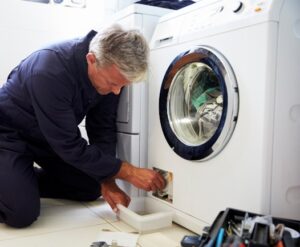
If you find any visible damage, you should replace the hose immediately. Also, ensure that all connections are correctly tightened so that no small leakages may occur during use. To prevent further problems from arising due to leaking hoses, it’s best practice to regularly check for any potential issues before starting a cycle.
Level the Washing Machine
It is essential to properly level your washing machine with the ground for optimum usage. To remain balanced and stable during the cycle, washing machines should ideally be placed on a flat surface, such as a concrete floor. You can use something like a spirit or carpenter’s level to check if your washing machine level is correct.

Doing this will help ensure that your washer operates without vibration and won’t damage itself or adjacent surfaces due to movement while spinning clothes inside during its wash cycle.
Clean the Washer Drum
It’s important to regularly remove any residue, lint or debris that builds up inside the unit, as this can cause unpleasant odours and damage clothing. To clean your washing machine’s drum, use a damp cloth to remove dirt and grime from the interior surface. Then run an empty cycle with either hot water or diluted white vinegar – leaving baking soda in the drawer – for about 30 minutes to thoroughly sanitize it.
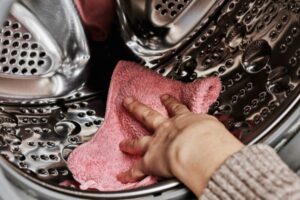
For extra-tough stains, you can fill a small tub with warm water and some detergent before adding directly into the drum; then, turn on a regular washing program cycle.
Check the Settings
Checking that the temperature and spin cycle is set correctly can help preserve clothing and linens from too much wear and tear. It’s also necessary to check for any program options your washer may have. For instance, if you’re purchasing a new washing machine, look for an alternative such as “Eco-Cycle”, which will save energy by slowing down the spin cycle or even reducing the water level used in each load of laundry.
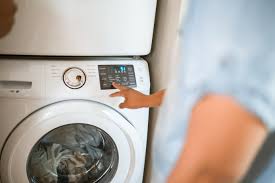
Additionally, if you make any changes to your washing machine’s settings, give them time to take effect before running another load of clothes.
Common Maintenance Practices
It is crucial to follow standard maintenance tips to ensure that your washing machine continues to work correctly.
Use Self-Cleaning Function
One of your washing machine’s most important maintenance procedures is to run periodic self-cleaning functions. This process will help remove any residue buildup caused by detergents, fabric softeners and dirt that can stick to the drum of the machine over time, don’t worry most modern washing machines have this function, if there is none, make sure to check the owner’s manual.

The self-cleaning function works by running a washing cycle on hot water without any laundry, allowing all soap residues to be washed away before they have a chance to accumulate and damage your appliance.
Check Seals and Gaskets
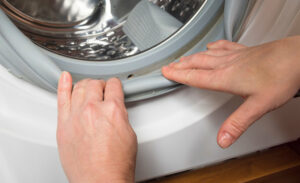
As part of a maintenance routine, you should inspect all of the rubber seal and door gasket for any signs of wear, tear, or deterioration from age or chemicals used in detergents. If any pieces appear worn out, it may be necessary to replace them as soon as possible to prevent further water damage. Doing this can also help ensure that your washer door stays intact.
Replace Worn-Out Parts
Over time, some components will become weak and inefficient due to wear and tear. Returning these items can help extend the life of your appliance and prevent further damage down the line. Make sure to check for any loose screws, as this can be a sign that something needs replacing or tightening up.
Purchase a spare set of replacement parts for everyday items like belts, gaskets, filters and more in case you need them quickly, so you don’t need to wait for delivery from the store. This way, if anything fails unexpectedly in your washer, you’ll have it on hand already
Descale the Drum
Dryer drum descaling involves removing any scale or buildup from the inside of the drum. This is necessary to ensure optimal washing performance, as buildup can lead to damaged clothing and poor water flow. It would help if you descaled your washing machine’s drum regularly to help prevent any long-term damage and unnecessary repairs.
It is also important to rinse out the detergent drawer and clean it with hot soapy water after descaling, which will help keep your washer running more efficiently over time.
Clean Detergent Drawer
Cleaning the detergent drawer regularly is an essential step in washing machine maintenance. The detergent drawer should be rinsed with clean water once a month or when it begins to accumulate lint and detergent residue.

To do this, remove the drawer and rinse it with hot water and mild detergent. Rinse thoroughly and dry completely before replacing it in the washer. This will help keep your clothes clean while preventing any clogs that could lead to more significant problems down the road.
Clean the Exterior of your Washing Machine
Maintaining the exterior of your washing machine is essential to ensure its proper functioning. You’ll want to clean any dirt or dust around the outside, paying attention to crevices and hard-to-reach places where grime may have accumulated.
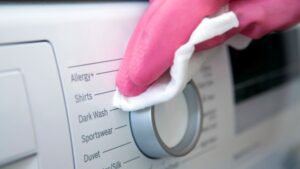
Ensure no obstructions are near the washer door and that the washing machine door open and close properly. To keep your device looking good for years, wipe down all surfaces with a soft, damp cloth and use glass cleaner for stainless steel models if necessary.
Check Washer Hose and Pipe
These components can become worn over time, which can cause major leaks in your home. To inspect the hose, you should first turn off the machine’s water supply, then look at each hose for signs of wear or pinholes that could allow water to escape. If discrepancies are found, replace the inlet and outlet/ drain hose with new ones.
It’s also essential to ensure that all washing machine hoses are connected securely, as any leaks could cause further problems with the washing machine over time.
Common Mistakes that Damages your Washing Machine
There also a few things that you might do regularly that is actually damaging to your machine.
Not Appropriate Amount of Detergent
Using too much detergent may result to ovesudsing which can corrode your machines while using too little might prompt you to overwork your washer.
Heavy Load
Having too many clothes per load will overly strain the motor of machines which will shorten the lifespan of your washer.
Not Keeping Washer Door Open
Even though it will look cleaner, it is important to keep your door open even a small opening will do just to avoid trapping moisture to allow bacteria to develop.
Conclusion
Regular washing machine maintenance is essential in keeping it running smoothly and efficiently, as well as using your machine properly. Hopefully, these maintenance tips can help prolong your washer’s lifespan.

